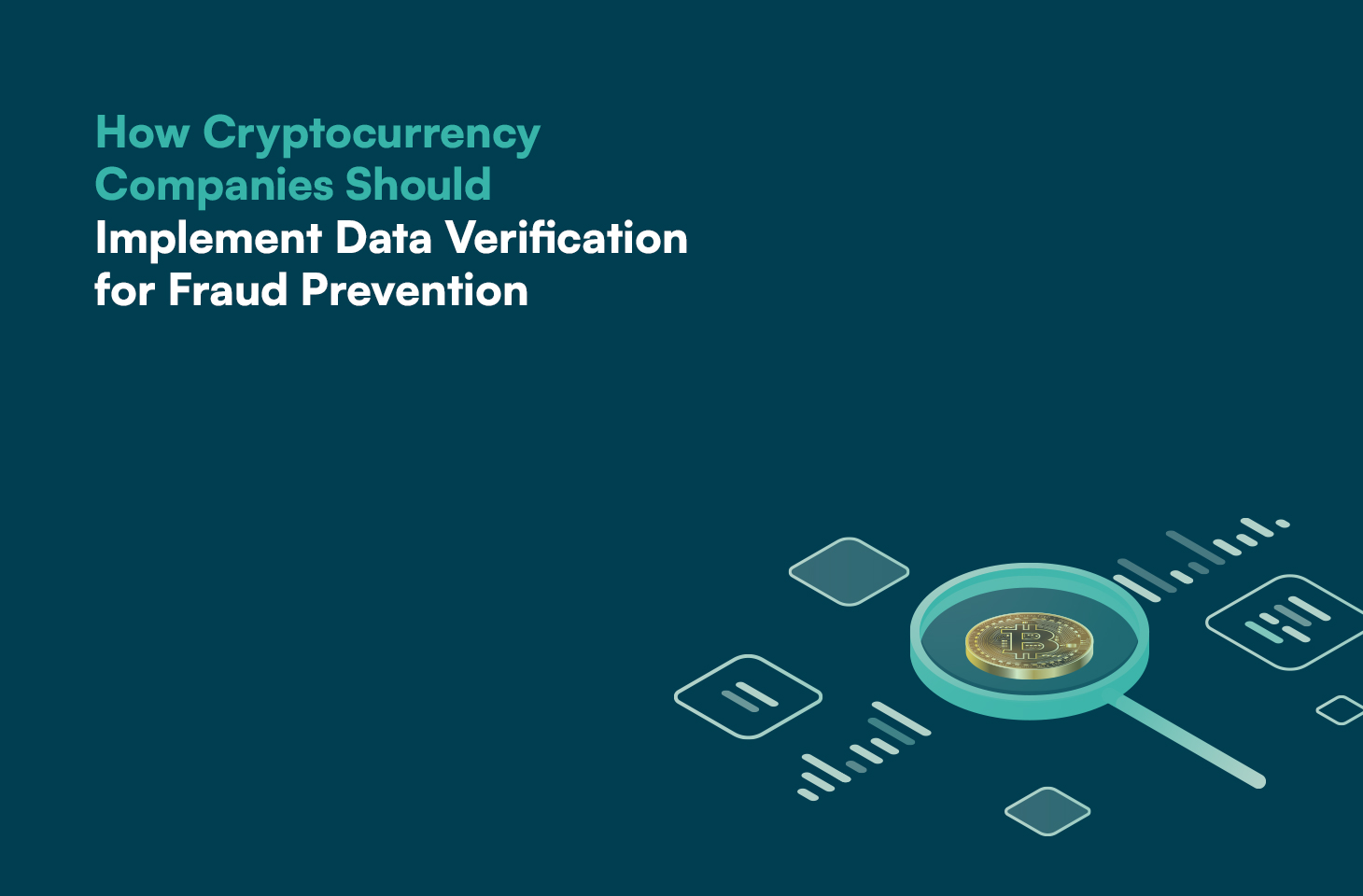As the cryptocurrency industry continues to grow rapidly, so does the sophistication of fraudsters looking to exploit vulnerabilities. From fake identities to money laundering, bad actors are leveraging gaps in onboarding and compliance to manipulate crypto platforms. For exchanges, wallets, DeFi platforms, and Web3 apps, data verification has become a non-negotiable tool for fraud prevention and regulatory compliance.
In this article, we’ll explore how cryptocurrency companies can implement data verification effectively and why it’s essential for securing user trust and staying ahead of evolving threats.
Why Fraud is a Growing Threat in Crypto
Cryptocurrency platforms face unique fraud risks due to the pseudonymous nature of blockchain technology. Common types of crypto fraud include:
- Synthetic identity fraud using AI-generated IDS
- Account takeovers and phishing schemes
- Money laundering through unverified wallets
- Pump-and-dump schemes with fake user accounts
- Exploitation of KYC gaps during onboarding
Traditional KYC methods, such as manual ID uploads or document checks, are increasingly ineffective against these threats.

What Is Data Verification in Crypto?
Data verification refers to the process of validating user-submitted information, like name, date of birth, phone number, email, or ID number, against real-time, authoritative data sources. This is often done via APIs that integrate into an exchange’s onboarding flow. Unlike document-based checks, data verification goes deeper by cross-referencing identity data across multiple trusted databases, including government records, credit bureaus, and telecom providers.
Benefits of Data Verification for Crypto Platforms
1. Detects Fake or Synthetic Identities
With AI-generated IDs and deepfake tech on the rise, data verification helps flag inconsistencies by validating identities against real-world data sources.
2. Enhances AML Compliance
By verifying user data in real time, crypto platforms can meet global Anti-Money Laundering (AML) and Know Your Customer (KYC) standards more efficiently.
3. Faster and Safer Onboarding
Data verification streamlines the user registration process by reducing the need for document uploads and manual reviews.
4. Reduces Risk of Chargebacks and Account Takeovers
Verified user data makes it harder for fraudsters to use stolen credentials or create multiple accounts.
5. Improves Reputation and Trust
Compliance with global identity standards boosts investor confidence and regulatory trust, essential in an industry under constant scrutiny.
How to Implement Data Verification in a Crypto Platform
✅ 1. Integrate with Trusted Data Verification APIs – Prembly
Choose a provider such as Prembly that specialises in identity verification for crypto and fintech. Prembly offers real-time data validation, biometric matching, and global coverage.
✅ 2. Adopt a Multi-Layered Verification Approach
Use a combination of:
- Email & phone validation
- Biometric checks
- Intelligence Screening (IP, Mobile etc)
- Government database verification
- Behavioral analytics
- Blockchain analysis tools (for wallet reputation & transaction risk)
This layered approach increases accuracy and resilience against different types of fraud.
✅ 3. Automate Risk Scoring and Alerts
Use fraud detection tools such as Identityradar that can flag high-risk users during onboarding or based on wallet behaviour. Automated risk scores can trigger enhanced due diligence (EDD) or temporary freezes on suspicious accounts.
✅ 4. Ensure Data Privacy Compliance
When verifying user data, crypto platforms must comply with global data privacy laws. Work with vendors that prioritise secure data handling and encryption.
✅ 5. Continuously Monitor Existing Users
Fraud doesn’t end after onboarding. Implement ongoing monitoring to detect changes in user behaviour, wallet activity, or suspicious login patterns is very important.
As the cryptocurrency industry continues its rapid expansion, security remains a top priority, especially when it comes to preventing the creation of fake accounts. Recent trends show that identity verification technologies are becoming crucial weapons in this fight.
Crypto companies are facing an alarming surge in fraud attempts, particularly with the rise of sophisticated deepfake technologies. To counter these threats, the industry is increasingly turning to Non-Doc Verification solutions that allow users to verify their identity without traditional documents like passports or IDs. These methods not only speed up onboarding but also significantly reduce the risk of synthetic fraud, which often underpins fake account creation.
Crypto currency companies that prioritise sophisticated identity verification are better positioned to protect their ecosystems from fraud and maintain trust with users. As the crypto sector grows, integrating advanced verification methods will be essential for platforms aiming to create a secure, fraud-resistant environment.







